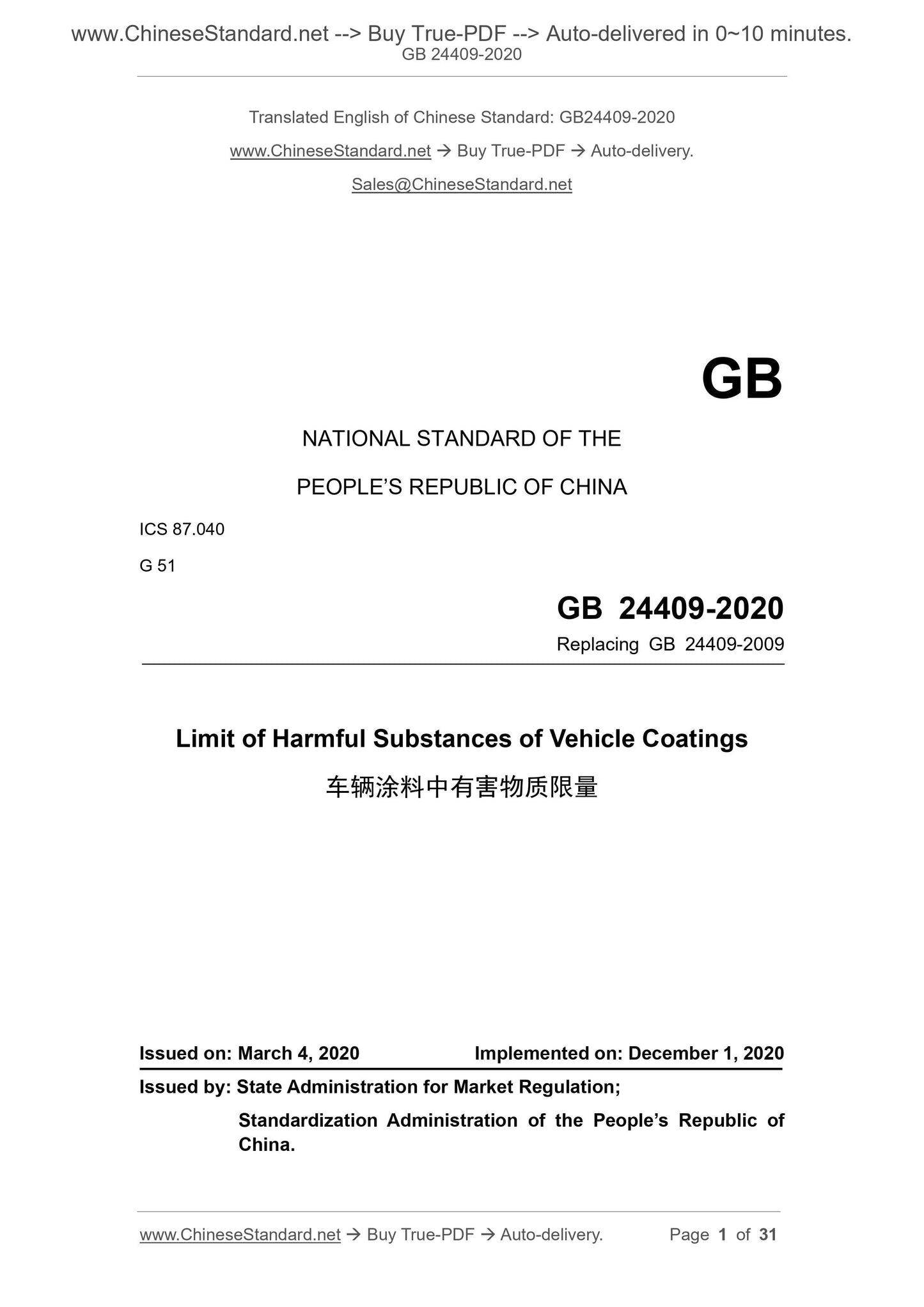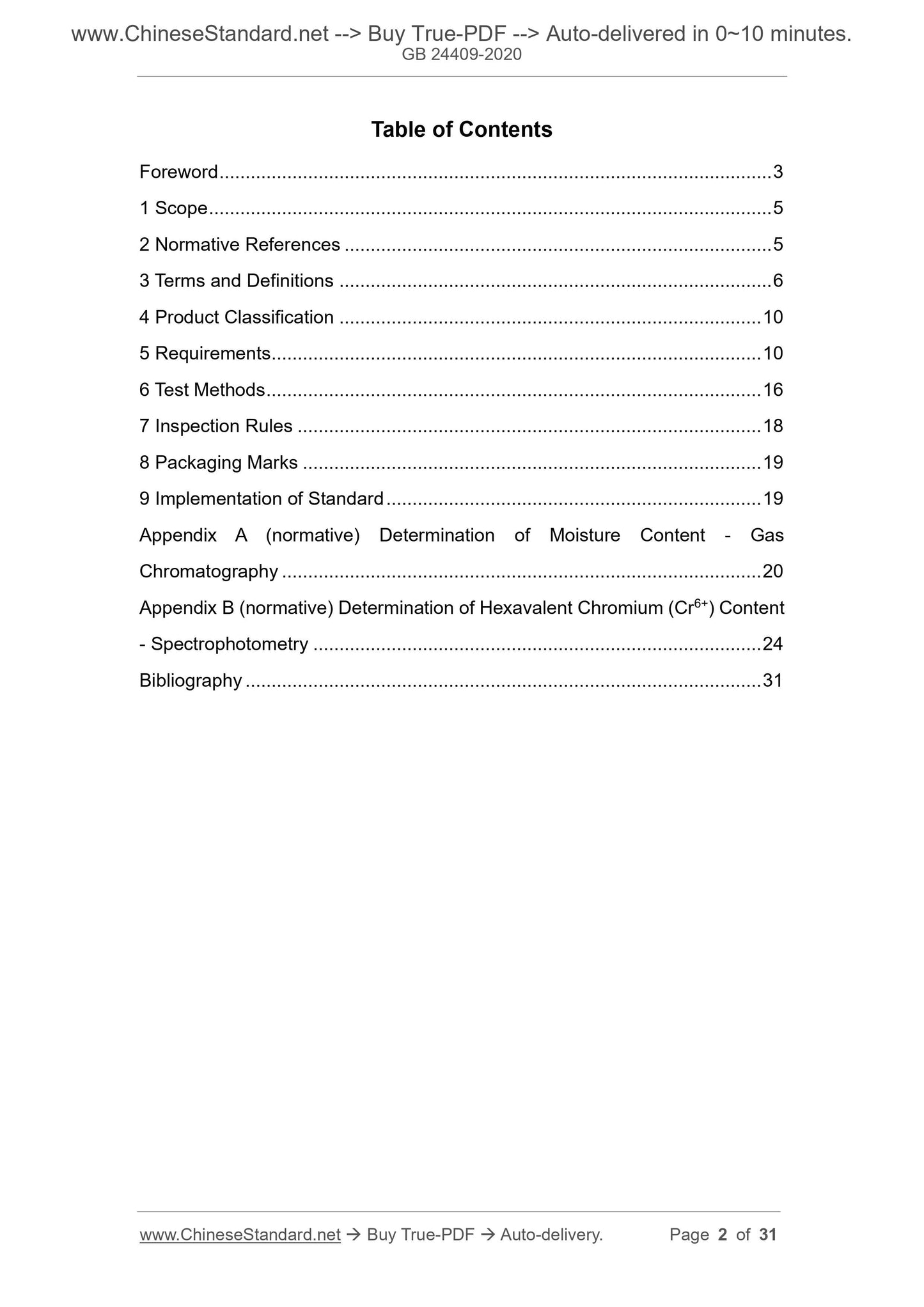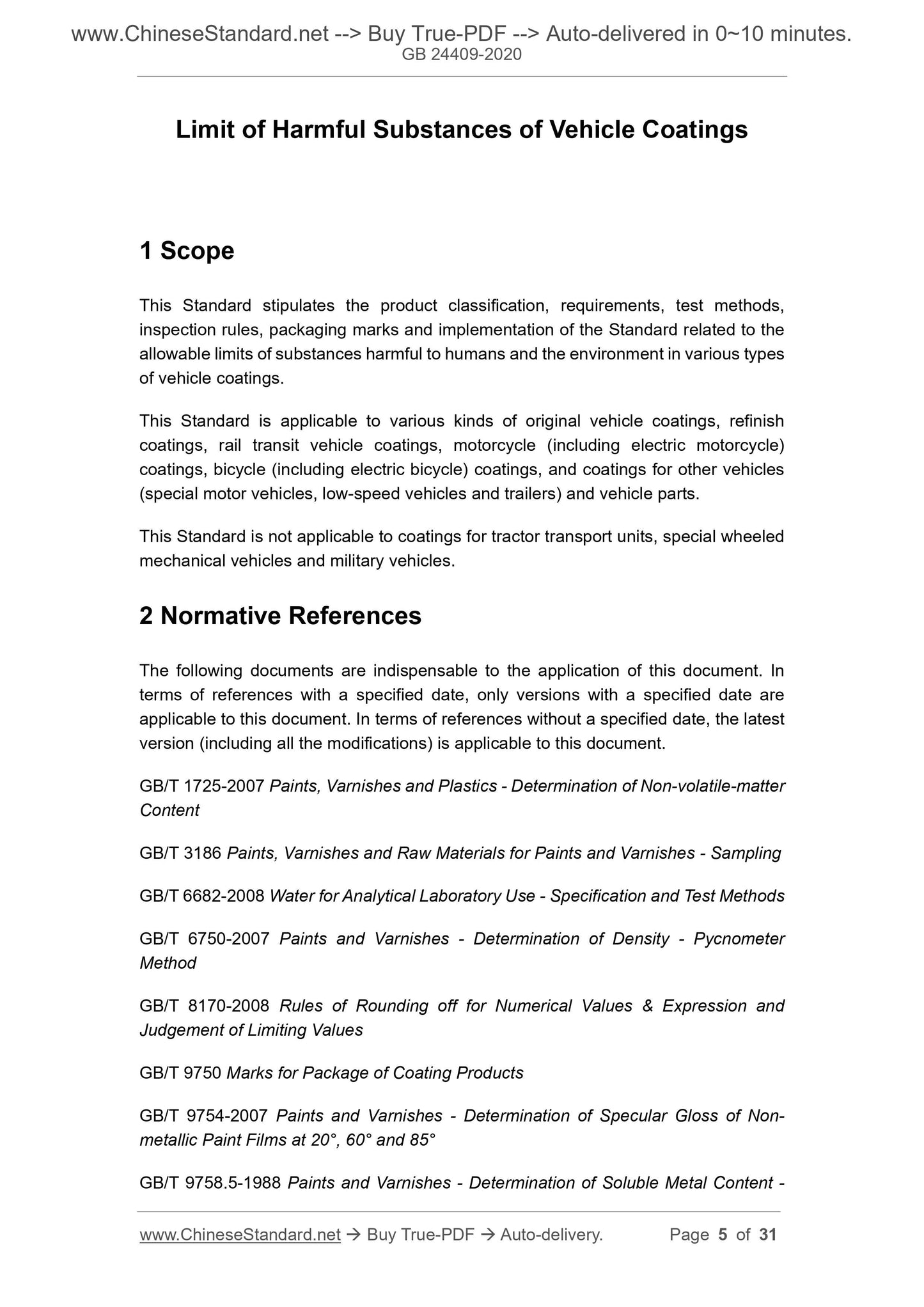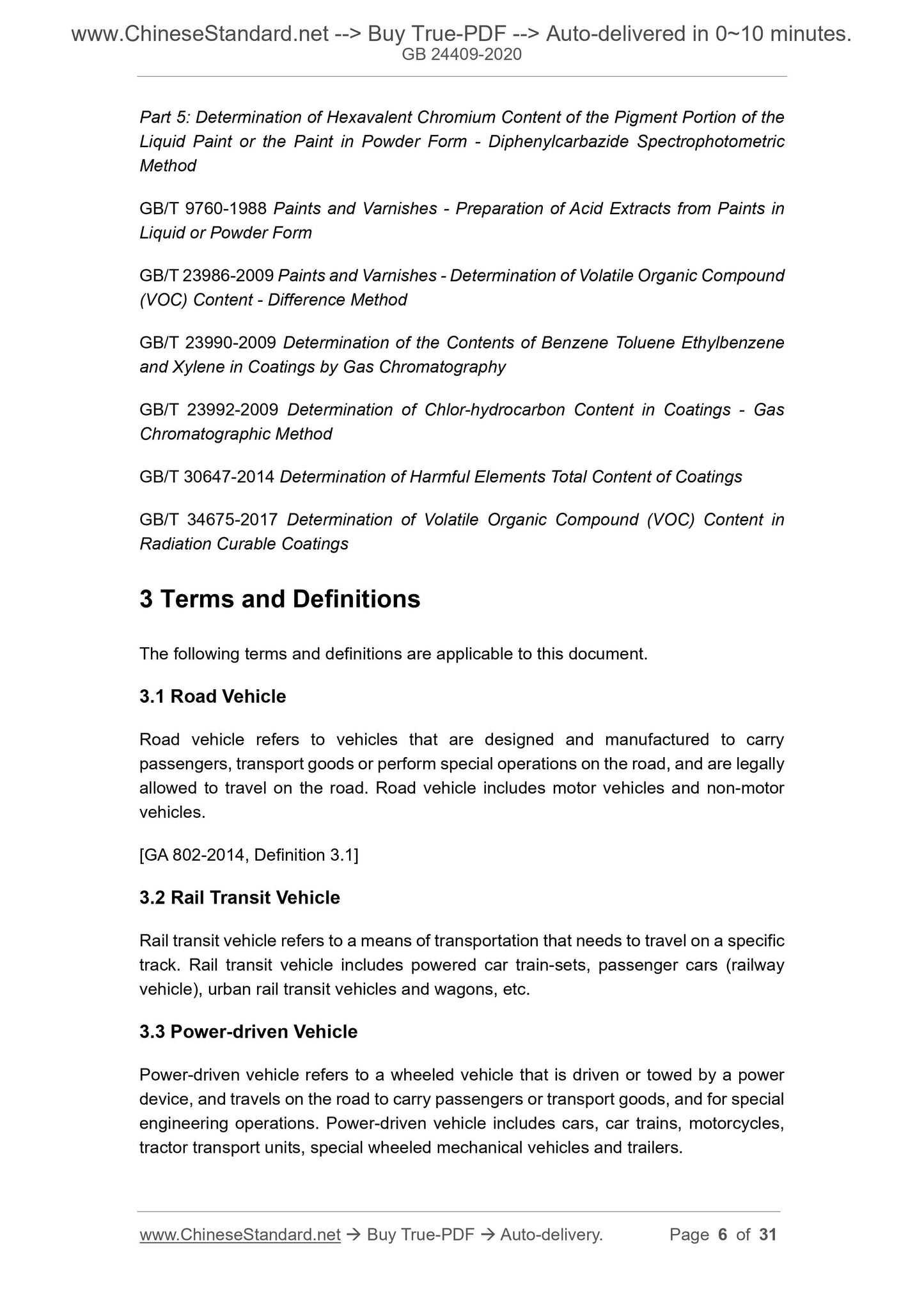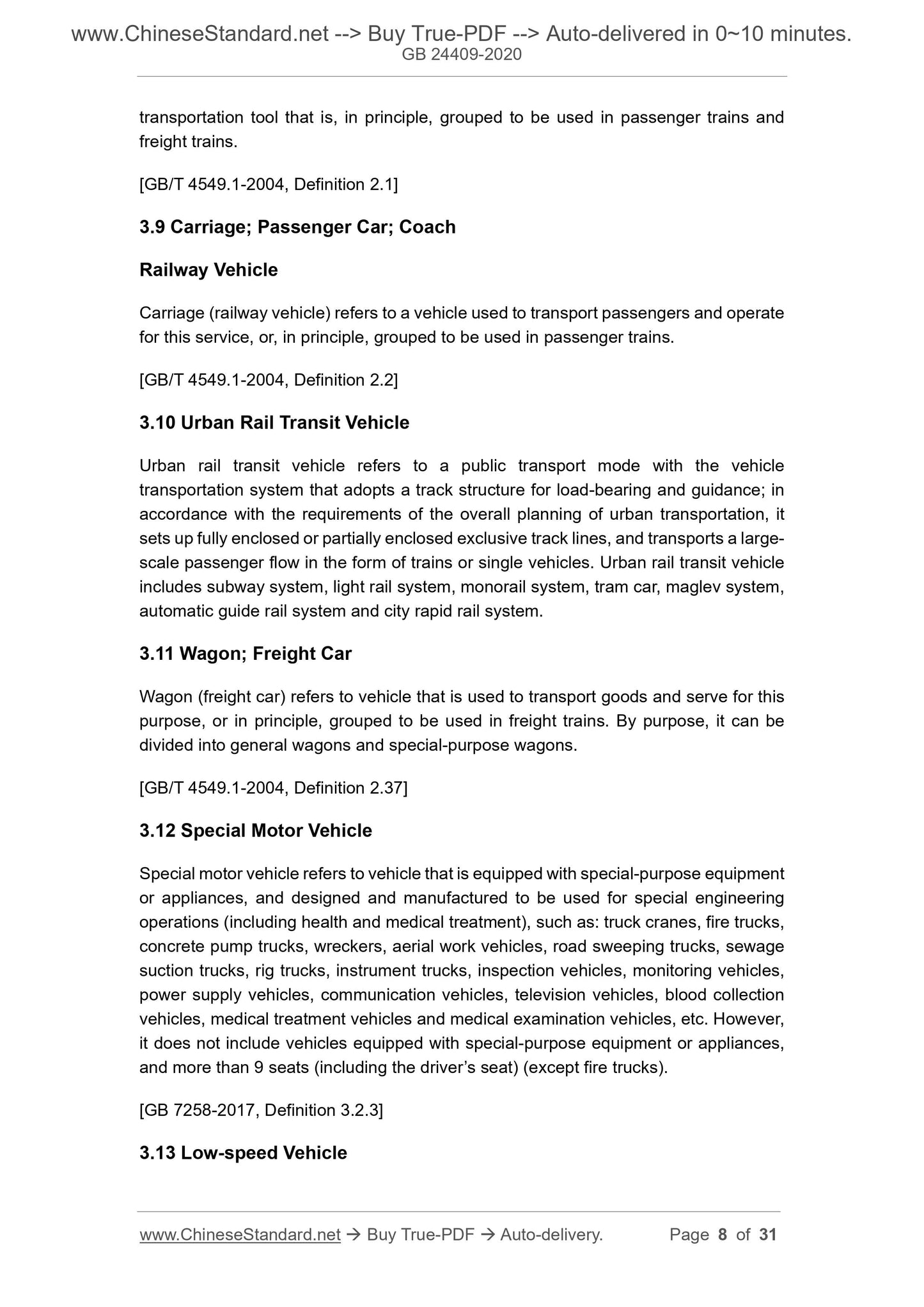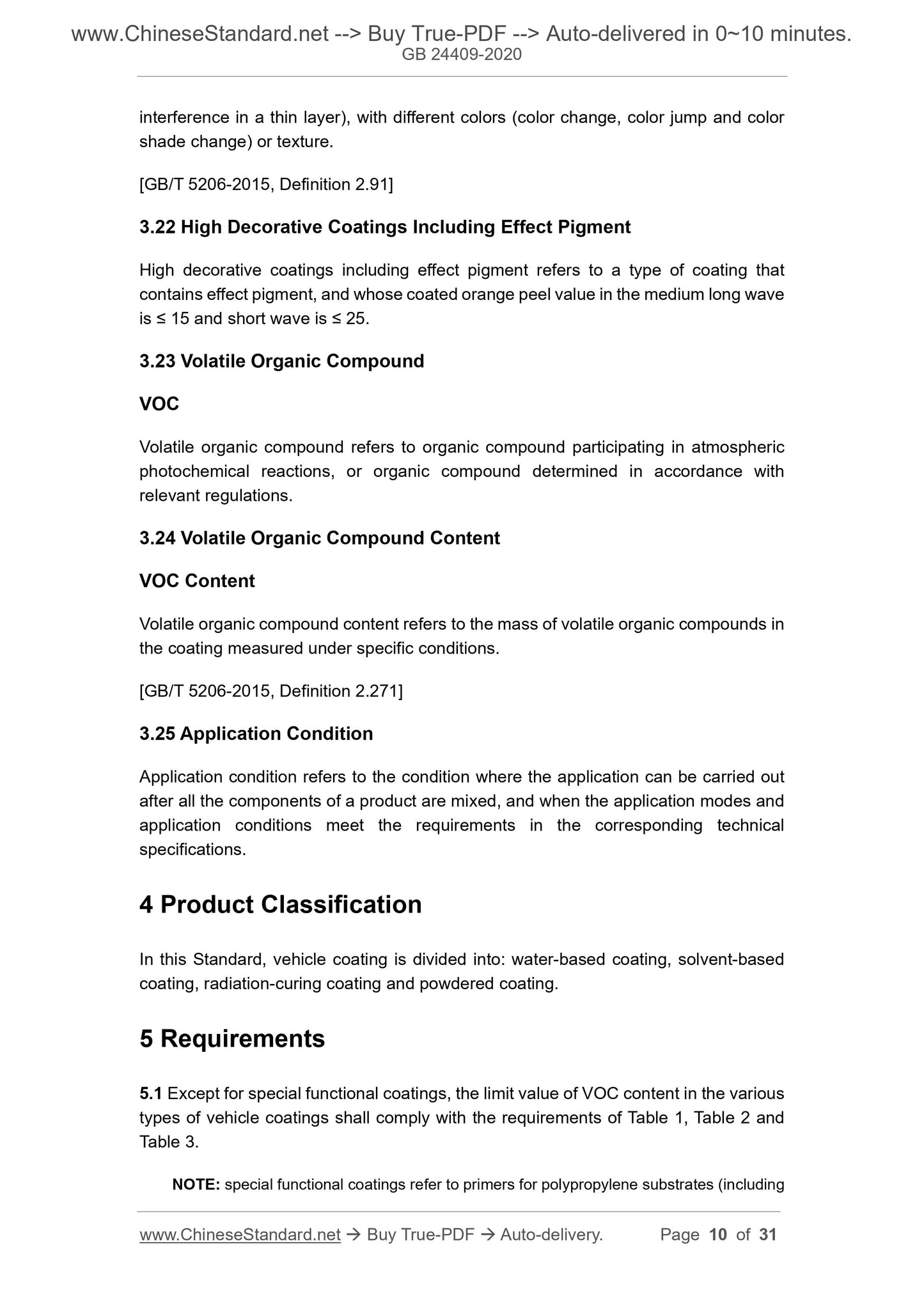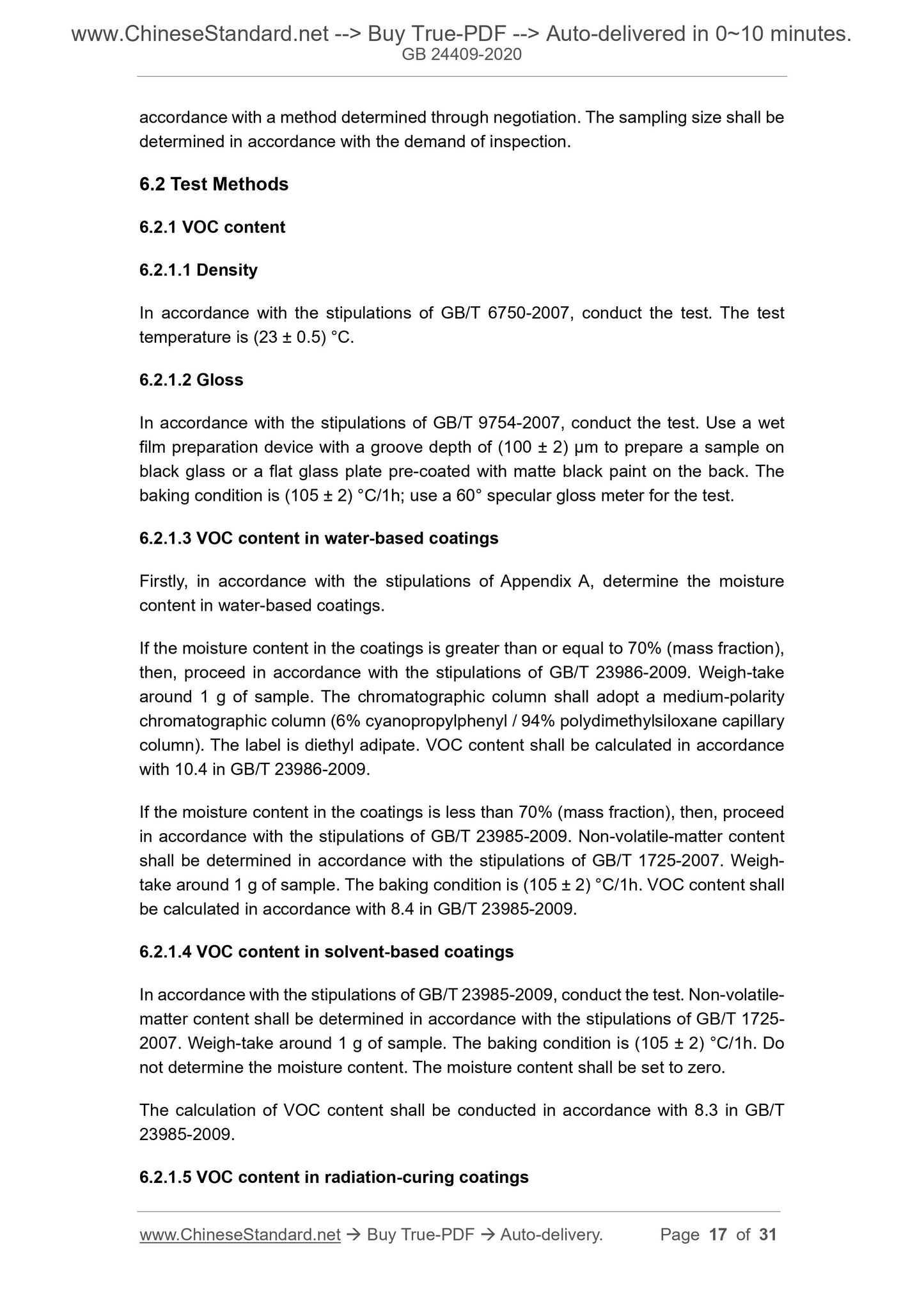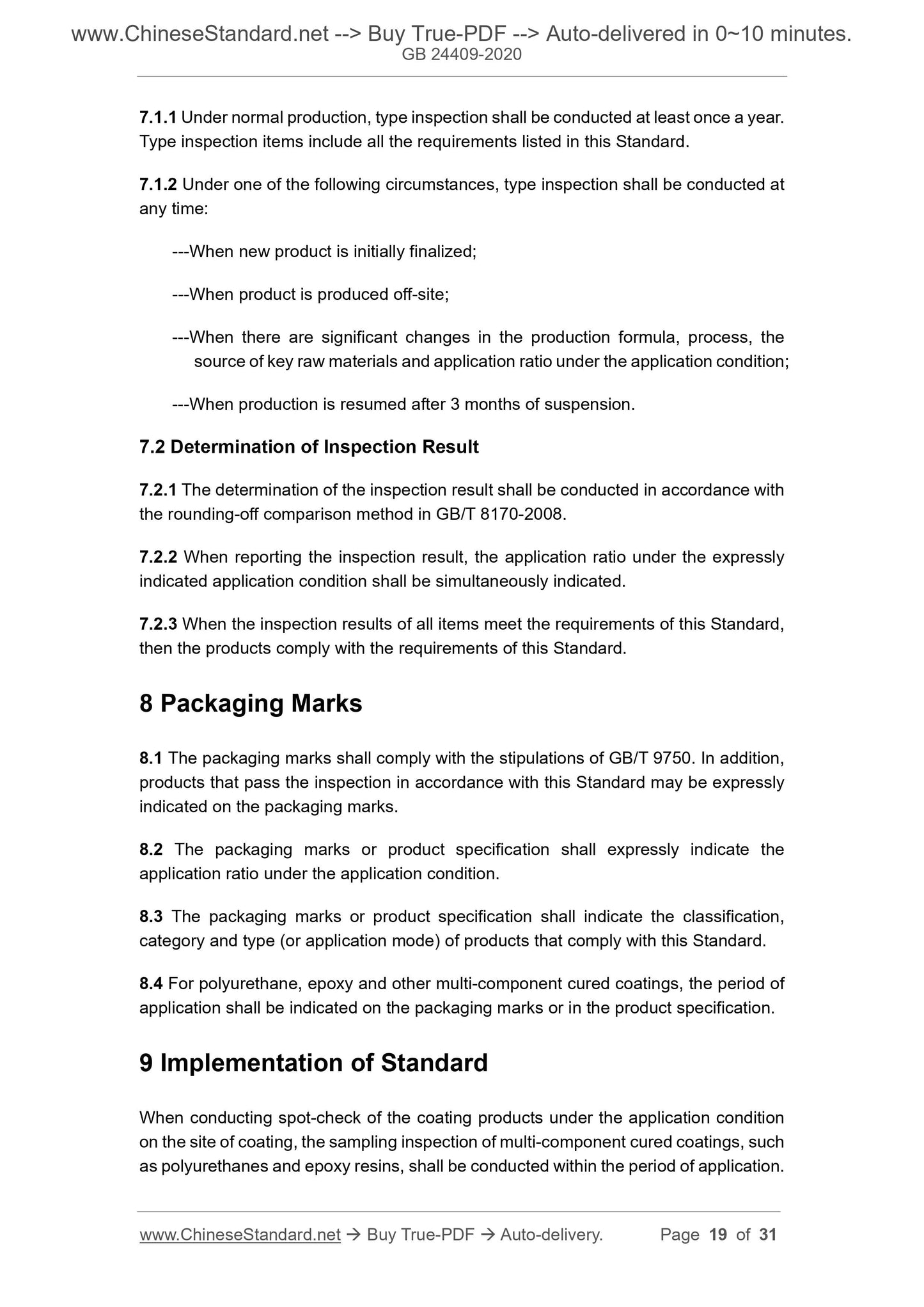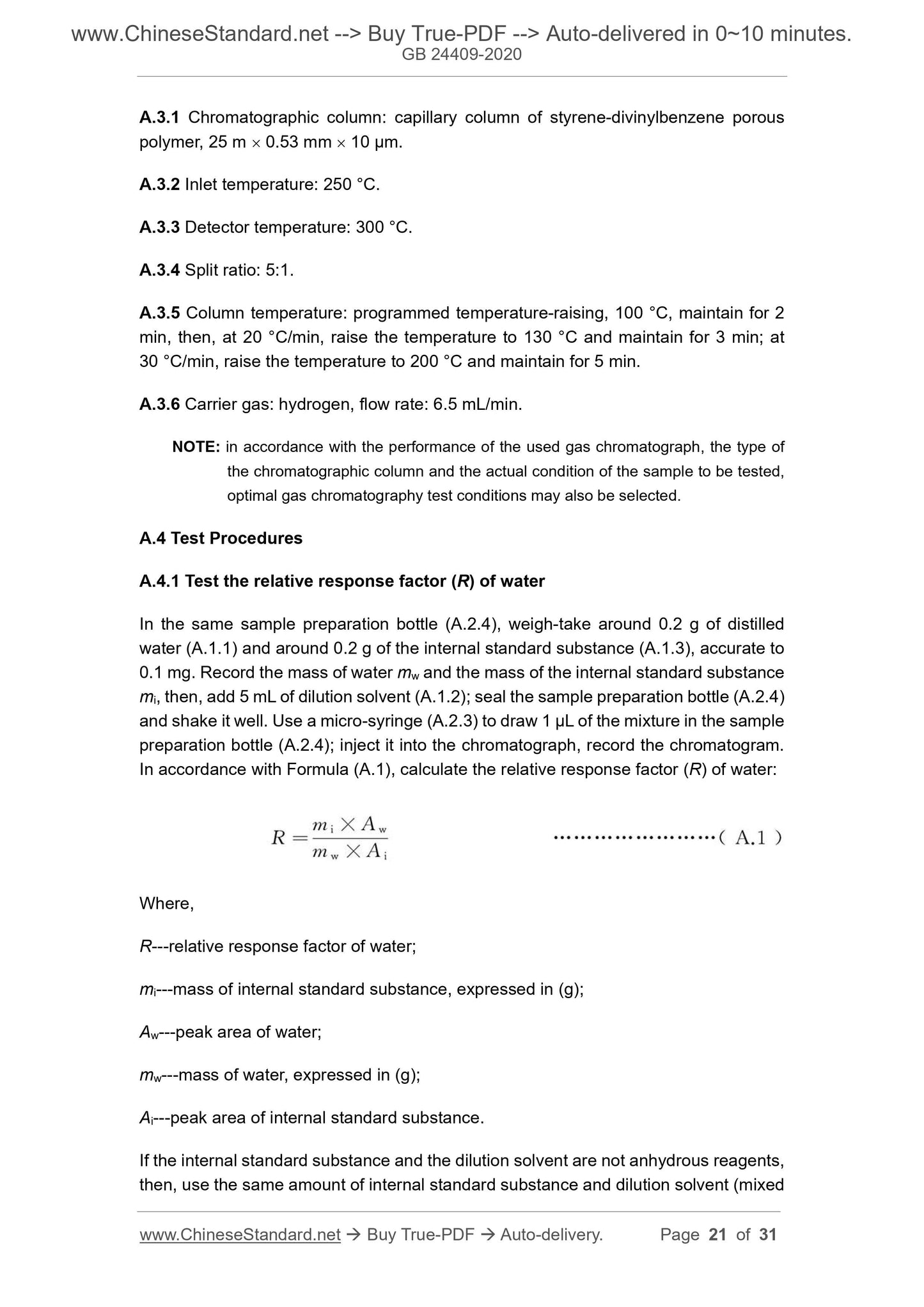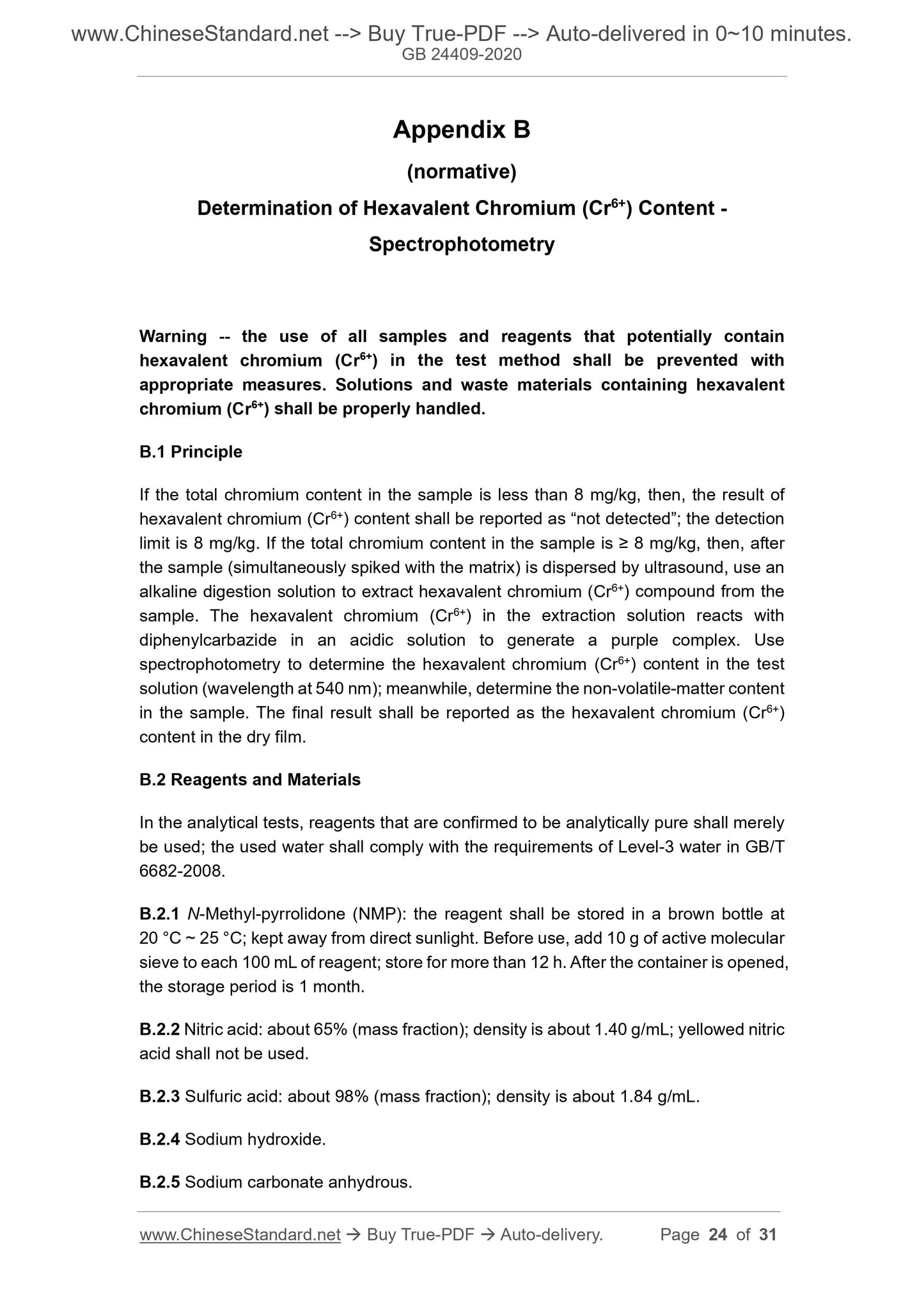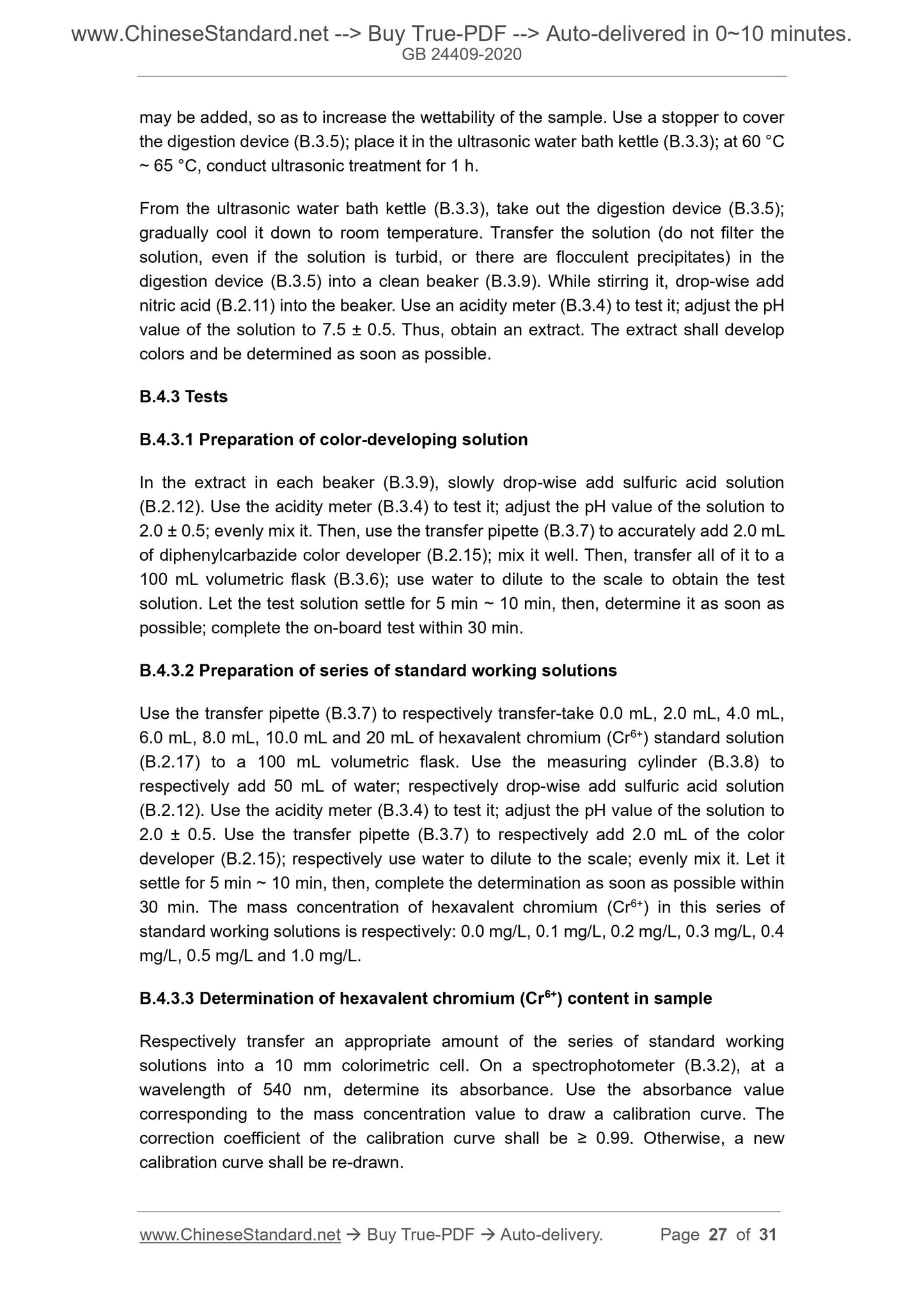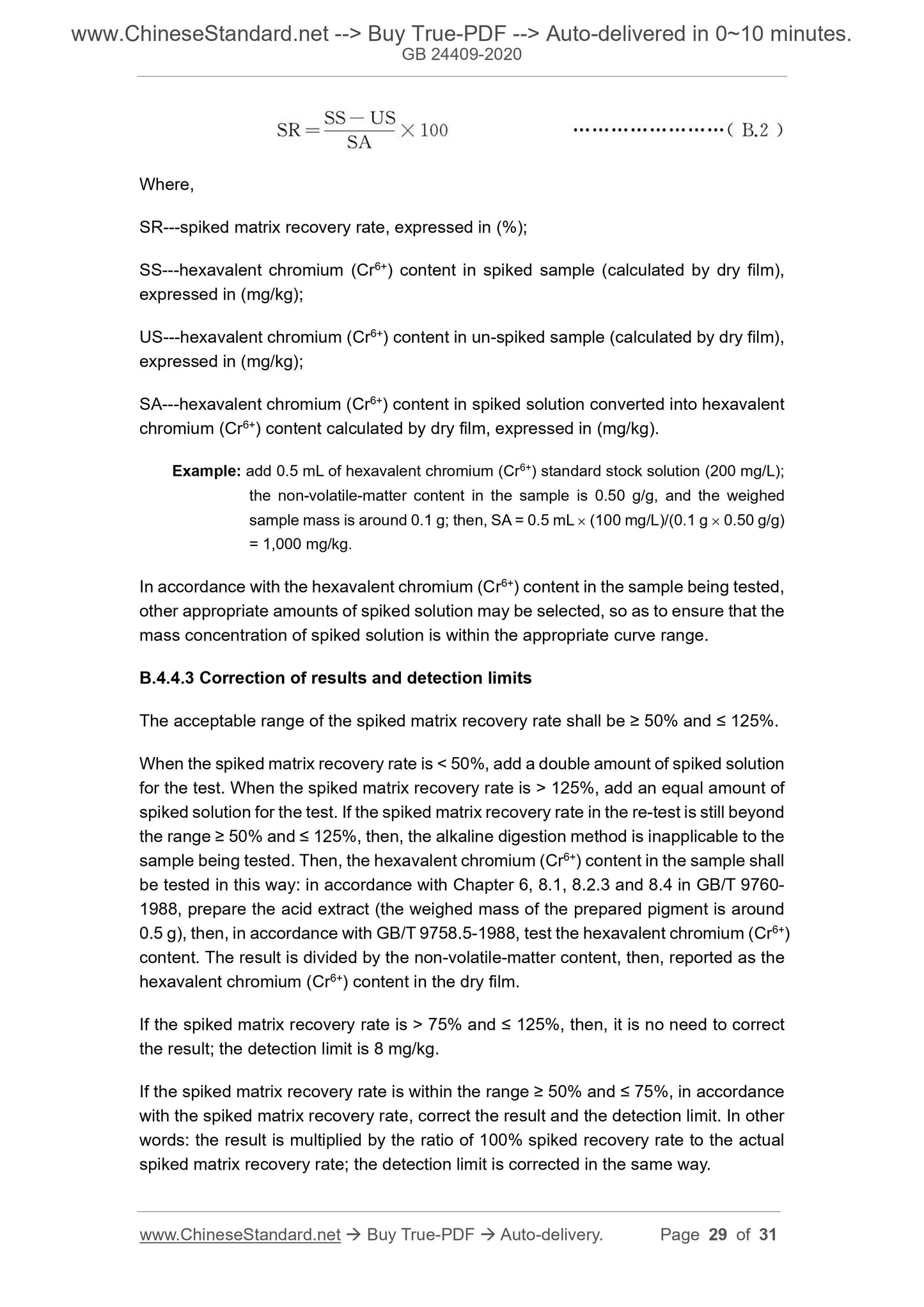1
/
of
12
www.ChineseStandard.us -- Field Test Asia Pte. Ltd.
GB 24409-2020 English PDF
GB 24409-2020 English PDF
Regular price
$225.00
Regular price
Sale price
$225.00
Unit price
/
per
Shipping calculated at checkout.
Couldn't load pickup availability
GB 24409-2020: Limit of Harmful Substances of Vehicle Coatings
Delivery: 9 seconds. Download (and Email) true-PDF + Invoice.Get Quotation: Click GB 24409-2020 (Self-service in 1-minute)
Newer / historical versions: GB 24409-2020
Preview True-PDF
Scope
This Standard stipulates the product classification, requirements, test methods,inspection rules, packaging marks and implementation of the Standard related to the
allowable limits of substances harmful to humans and the environment in various types
of vehicle coatings.
This Standard is applicable to various kinds of original vehicle coatings, refinish
coatings, rail transit vehicle coatings, motorcycle (including electric motorcycle)
coatings, bicycle (including electric bicycle) coatings, and coatings for other vehicles
(special motor vehicles, low-speed vehicles and trailers) and vehicle parts.
This Standard is not applicable to coatings for tractor transport units, special wheeled
mechanical vehicles and military vehicles.
Basic Data
| Standard ID | GB 24409-2020 (GB24409-2020) |
| Description (Translated English) | Limit of Harmful Substances of Vehicle Coatings |
| Sector / Industry | National Standard |
| Classification of Chinese Standard | G51 |
| Classification of International Standard | 87.040 |
| Word Count Estimation | 22,242 |
| Date of Issue | 2020-03-04 |
| Date of Implementation | 2020-12-01 |
| Issuing agency(ies) | State Administration for Market Regulation, China National Standardization Administration |
Share
